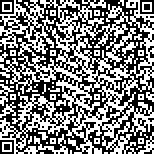孙亚鲁,孙家正,霍飞翔,等.基于近红外脑功能成像技术观察不同吞咽任务对脑卒中吞咽功能障碍患者皮质功能活动的影响[J].中华物理医学与康复杂志,2025,47(1):25-30
扫码阅读全文

|
| 基于近红外脑功能成像技术观察不同吞咽任务对脑卒中吞咽功能障碍患者皮质功能活动的影响 |
|
| |
| DOI:10.3760/cma.j.cn421666-20231128-00945 |
| 中文关键词: 近红外脑功能成像技术 脑卒中 吞咽障碍 |
| 英文关键词: Functional near-infrared spectroscopy Stroke Dysphagia Swallowing |
| 基金项目:山东省医药卫生科技项目(202316010454);济宁市重点研发计划项目(2022YXNS088);济宁市重点研发计划项目(2022YXNS069) |
|
| 摘要点击次数: 2786 |
| 全文下载次数: 2720 |
| 中文摘要: |
| 目的 采用近红外脑功能成像技术(fNIRS)观察不同吞咽任务对脑卒中后吞咽障碍患者大脑皮质激活和脑功能连接程度的影响。 方法 选取符合纳入和排除标准的30例脑卒中后吞咽功能障碍患者作为研究对象,所有患者均接受三项不同的吞咽任务,分别是吞咽动作观察(SO)、吞咽动作执行(SE)和吞咽动作想象(SI)。采用fNIRS采集脑卒中后吞咽障碍患者在执行不同任务时的氧合血红蛋白(HbO2)和脱氧血红蛋白(HbR)的浓度,通过NirSpark软件对HbO2和HbR的浓度进行分析,得出患者的大脑皮质激活情况(β值)和脑功能连接程度。 结果 与静息态相比,脑卒中后吞咽障碍患者在执行SO任务时被激活得区域包括左初级感觉皮质(LS1)、右前额叶皮质(RPFC);在执行SE任务时被激活得区域包括左前额叶皮质(LPFC)、左初级感觉皮质(LS1)、右前额叶皮质(RPFC)、左运动皮质(LM1);在执行SI任务时被激活得区域包括左前额叶皮质(LPFC)、左初级感觉皮质(LS1)和右前额叶皮质(RPFC)。与出血性脑卒中患者比较,缺血性脑卒中患者在执行SE任务时,右初级感觉皮质(RS1),右运动皮质(RM1)和左初级感觉皮质(LS1)出现明显的激活。脑卒中后吞咽障碍患者在执行SO任务时平均脑功能连接值是(0.241±0.089);在执行SE任务时平均脑功能连接值是(0.251±0.086),在执行SI任务时平均脑功能连接值是(0.239±0.087),静息状态时的平均脑功能连接值是(0.213±0.093)。脑卒中后吞咽障碍患者在执行3项吞咽任务时的平均脑功能连接值均显著高于其静息态,差异均有统计学意义(P<0.05),且其在执行SE任务时的平均脑功能连接值明显高于执行SI任务时,差异有统计学意义(P<0.05)。 结论 脑卒中后吞咽障碍患者在执行不同的吞咽任务时,前额叶皮质和初级感觉皮质的激活较为广泛,且不同的吞咽任务均可改善脑卒中后吞咽障碍患者的平均脑功能连接值。 |
| 英文摘要: |
| Objective To explore the effect of different swallowing tasks on cortex activation and functional connectivity in stroke survivors with dysphagia using functional near-infrared spectroscopy (fNIRS). Methods Thirty stroke survivors with dysphagia performed three different swallowing tasks: swallowing action observation (SO), swallowing action execution (SE), and swallowing action imagination (SI). During each task, fNIRS was used to document the brain concentrations of oxyhemoglobin and deoxyhemoglobin. Cortex activation (β value) and brain functional connectivity were assessed. Results Compared with the resting state, the areas activated during the SO task included the left primary sensory cortex and the right prefrontal cortex. During the SE and SI tasks the left prefrontal cortex and the left motor cortex were activated as well. Compared with hemorrhagic stroke survivors, ischemic stroke survivors showed significantly greater activation of the right primary sensory cortex, the right motor cortex, and the left primary sensory cortex during the SE task. Functional connectivity during the SO, SE and SI tasks was significantly greater than in the resting state, with the average connectivity values during the SE task significantly higher than during the SI task. Conclusions Stroke survivors with dysphagia exhibit increased activation in the prefrontal cortex and primary sensory cortex during different swallowing tasks. Such tasks can improve their brain functional connectivity. |
|
查看全文
查看/发表评论 下载PDF阅读器 |
| 关闭 |